| DeKoven
Foundation
The DeKoven Foundation, also known as the DeKoven Center, Racine
College, and several other names, is one of the most interesting
places to me in Racine. I grew up relatively close to the grounds,
and by the time I reached high school in the early 1980s, my friends
from the neighborhood and I would run around on the DeKoven grounds
at night in the summer time, scaring the heck out of each other.
When I first became aware of DeKoven, all we knew was that it used
to be a boarding school, and then it was a place where nuns lived,
and sometimes the swimming pool would be open and we would go swimming
there.
At that time, there was no nursing home north of the chapel, just
a tennis court, a garden, and then thick woods all the way to De
Koven Avenue. If you wandered through the woods during the day,
you could see where some streets had formerly come into the DeKoven
grounds, and they were still there, along with curbs and old street
lights.
Walking around the old college buildings, there were several places
where you could see where kids had carved their initials into the
bricks. If you walked to the chapel and looked closely at the walls
near the ground, there were many many "Class of" stones
set into the bricks.
Racine College -- Starting in 1852
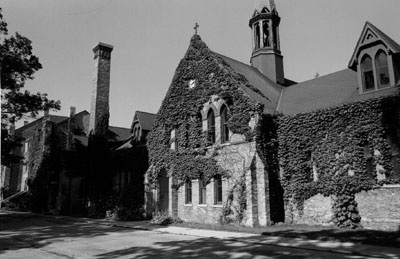 Racine
College started in in 1852, and one of the first buildings is still
a part of the East Building, the long building that parallels Lake
Michigan. In 1859, Dr. James DeKoven became the Warden of the College,
and he began to model the college on English colleges in Oxford
and Cambridge, adding new buildings in a quadrangle shape. Racine
College started in in 1852, and one of the first buildings is still
a part of the East Building, the long building that parallels Lake
Michigan. In 1859, Dr. James DeKoven became the Warden of the College,
and he began to model the college on English colleges in Oxford
and Cambridge, adding new buildings in a quadrangle shape.
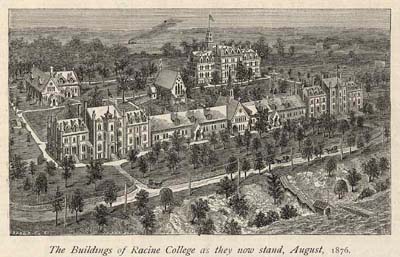 The
old college's motto was "Vigeat Radix," which means, "May
the root thrive," an appropriate motto for a college in a town
named after roots (Racine means root in French). The
old college's motto was "Vigeat Radix," which means, "May
the root thrive," an appropriate motto for a college in a town
named after roots (Racine means root in French).
From Racine: The Belle City:
"Later historians have linked old Racine College with many
projects which helped make Racine a better place in which to live.
St. Luke's Hospital is said to owe its origin to Dr. DeKoven and
his associates. The headmaster of the school, Rev. Edward Spalding,
raised the funds for the hospital and the Rev. Arthur Piper, Dr.
Park's successor as rector of St. Luke's Church, laid the cornerstone
in September, 1876. It had only 20 beds. Dr. John G. Meachem became
head of the medical staff and president of St. Luke's Hospital Board.
In addition to the hospital, the faculty is credited with founding
Taylor Home for Children (formerly called Taylor Orphan Asylum),
a home for the aged and three missions, in addition to assisting
projects of St. Luke's Church."
Also from Racine: The Belle City: "When in its prime,
the college was attended by such noted persons as the late Brig.
Gen. William 'Billy' Mitchell; Earl Winfield Spencer, U. S. Naval
Commander and first husband of the Duchess of Windsor; Gen. Mark
W. Clark; Tad Lincoln, son of the president, and A. J. Horlick."
Timeline
1851
Dr. Joseph Nickols of St. Luke's Church, Dr. Azel Cole of Nashotah
Seminary, Bishop Jackson Kemper, and two laymen, Gen. Philo White
and Marshall M. Strong meet in Milwaukee at a convention of the
Episcopal Church to plan an Episcopal College.
1852
The college is granted its first charter.
Dr. Roswell Park (1807-1869) is Racine College's first president.
May 5, cornerstone of first building laid, with an address by the
Rev. Mr. Nichols.
1853
First college building is completed and named Park Hall after Dr.
Park. All of Racine College's buildings were built by noted local
contractor, Lucas Bradley.
1857
Another fundraiser is held to for another building to add to Park
Hall.
1857
Financial "Panic of 1857" begins.
1859
Financial depression reaches the midwest. Dr. James DeKoven DD (1831-1879)
begins teaching at Racine College after his original school, St.
John's Hall in Delavan, merges with Racine College.
1863
Dr. DeKoven becomes Racine College's new warden.
1864
January 15: Park Hall burns to the ground with the exception of
one wing.
1867
Taylor Hall built with funds willed by Mr. and Mrs. Taylor. Taylor
Hall contained classrooms, a laboratory, and a library.
New chapel built "and
therein the daily service was chorally rendered by a vested choir
of thirty-two students, this being at the time the only vested choir
west of the Alleghany Mountains."
1868
"Dr. DeKoven becomes a delegate to the [Episcopal] church's
triennial General Convention." (from Racine: Growth and Change
in a Wisconsin County)
1875
Taylor Hall destroyed by fire.
1876
"Historical
Sketch of Racine College" written by Rev. Homer Wheeler.
1877
Taylor Hall rebuilt by public funds.
1878
The Law Faculty consists of eleven members.
1879
March 22: Dr. James DeKoven dies.
1884
Grammar school student, Clarence Atkinson, sends
a letter to his mother, Mrs. Glb. P. Atkinson, about receiving
a package from home, being sick, and various classes he's taking.
1887
Collegiate department closes.
1901
Racine
College yearbook
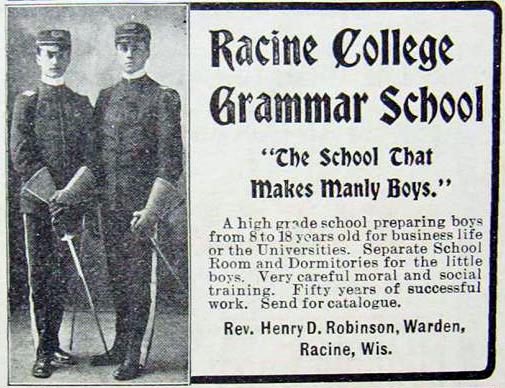
1908
March 25, 1908, Reverend Henry Douglas Robinson, president of the
College, becomes bishop of Nevada. The ceremony takes place in Racine's
St. Luke's Church.
1910
(postcard mailed in 1910)
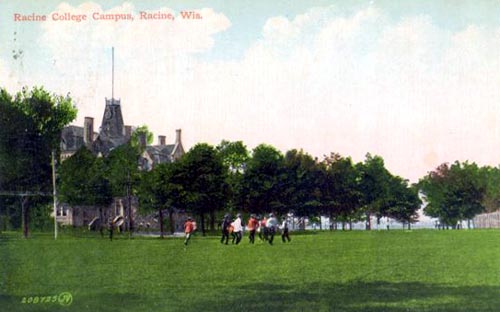
1919
"The preliminary program of the Conference for Church Workers
in the Province of the Mid-West, to be held at Racine College, Racine,
Wisconsin, July 8 to 17th, has been received. This program is planned
especially to help both clergy and laity to grasp the vision of
great opportunities for service in this new day. The various problems
confronting the Church will be considered in classes and lectures,
as will also Missions, Religious Education, Social Service and Church
Music. The speakers and leaders include: Bishop Webb, Bishop Wise,
Bishop Reese of Southern Ohio, the Rev. B. I. Bell, Miss Grace Lindley,
and the evangelists, Ted Mercer and Tom Farmer. For information
concerning the Racine Conference, address Miss Mary Knight, Executive
Secretary, 572 Marshall Street, Milwaukee, Wisconsin." (St.
Andrew's Cross, 1919)
1920s
"During the 1920s, the campus of Racine College played host
each summer to the 'Racine Conference,' a series of workshops for
Sunday School teachers, church musicians, and other lay leaders
of the diocese." (from Racine: Growth and Change in a Wisconsin
County)
1933
"Before closing in 1933, the College was used as a grammar
school, a boys' military school, and a junior college before closing
in August, 1933." (from Racine: Growth and Change in a Wisconsin
County)
1935: "Bishop Ivivs of the Episcopal Diocese of Milwaukee assisted
in making arrangements for the Community of St. Mary, the oldest
women's Religious community of the Episcopal Church, to take title
of the property. In search of a Summer home for dependent children
from Chicago, the Sisters of St. Mary began to make use of the property
and formed the DeKoven Foundation for Church Work." (from old
DeKoven Center website)
"In the fall of 1935, after two successive and apparently successful
summer camps, the Sisters incorporated the DeKoven Foundation for
Church Work and bought the property, thus saving it from a sheriff's
sale. Three years later, Sister Eanswith, who was Sister-in-charge
from 1938 to 1958, and two other sisters began year-round residence,
they and their successors maintaining it as a conference and retreat
center." (from Racine: Growth and Change in a Wisconsin County)
1938: The Sisters of St. Mary create a small chapel in Taylor Hall.
Photos from Racine College's History

Baseball team

Ball game

Taylor Hall?
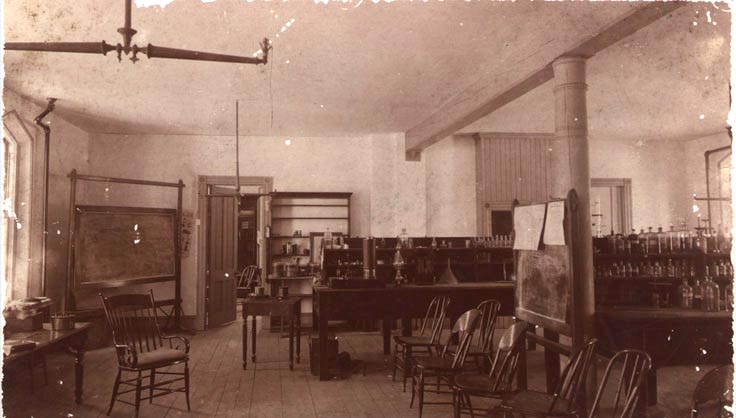
Chemistry lab

History class
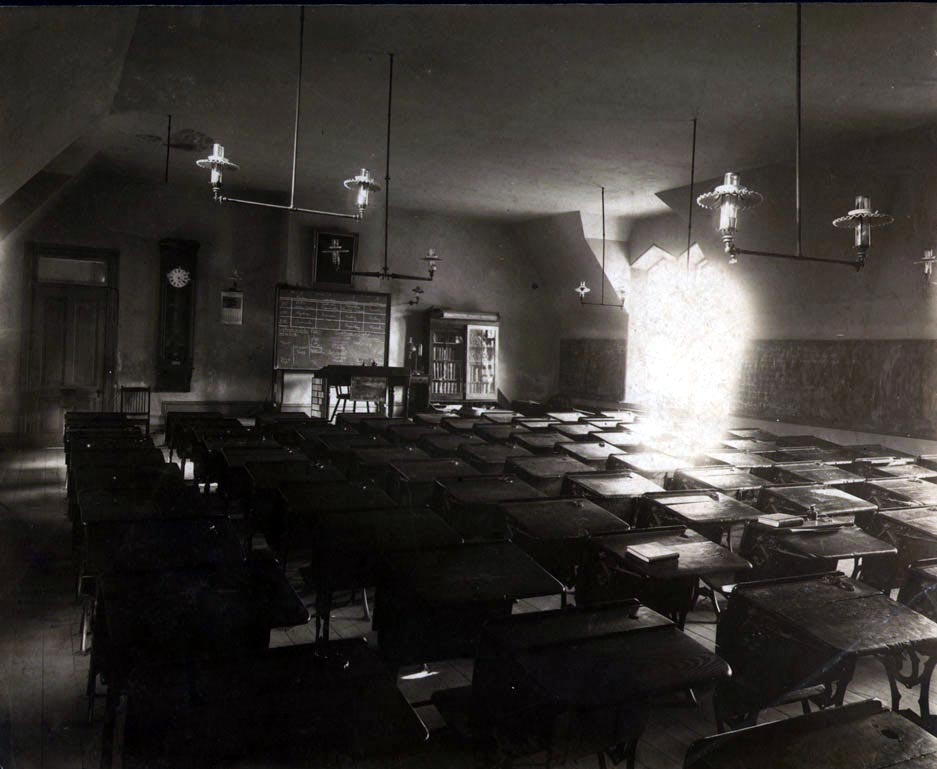
Classroom

Playing cricket
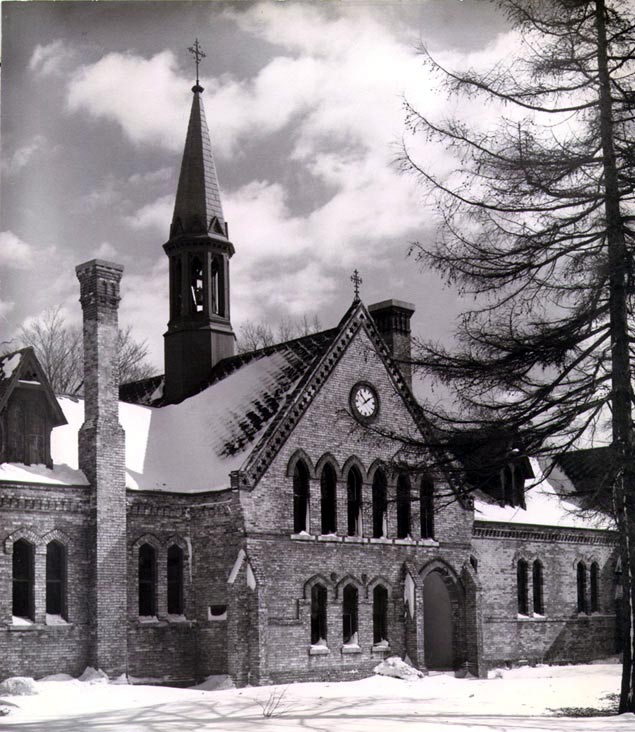
East Building showing clock
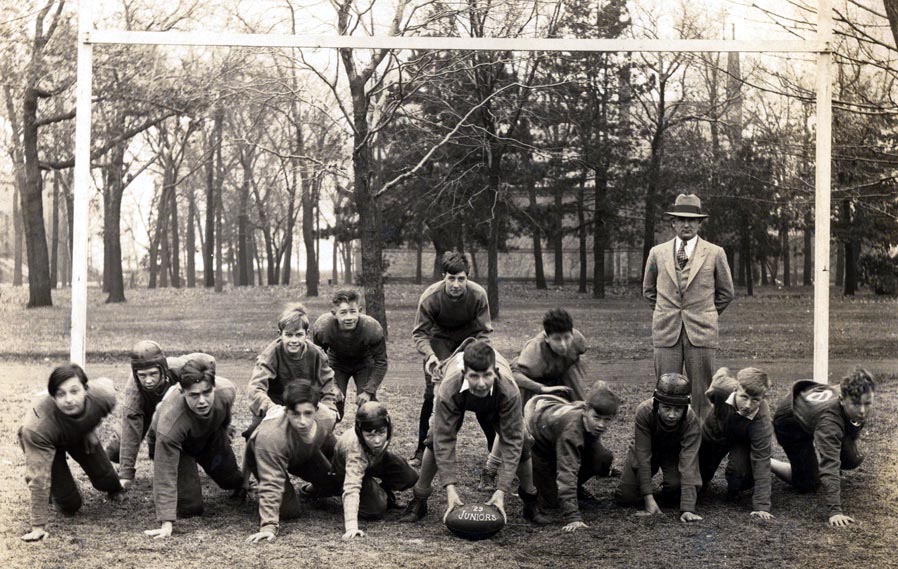
Football team in the endzone
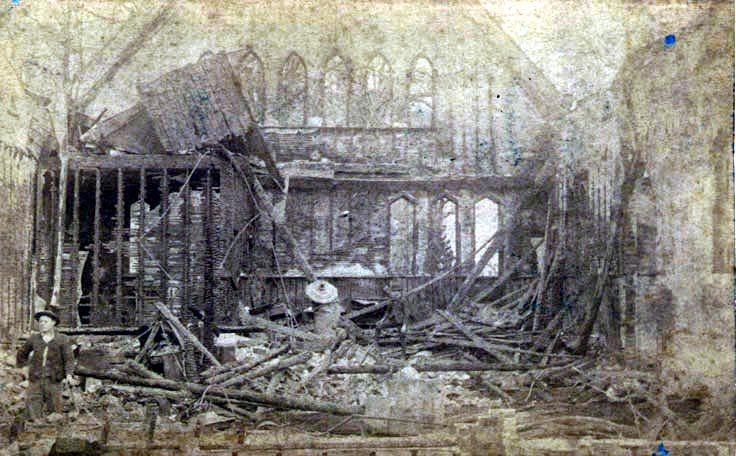
Taylor Hall after the fire
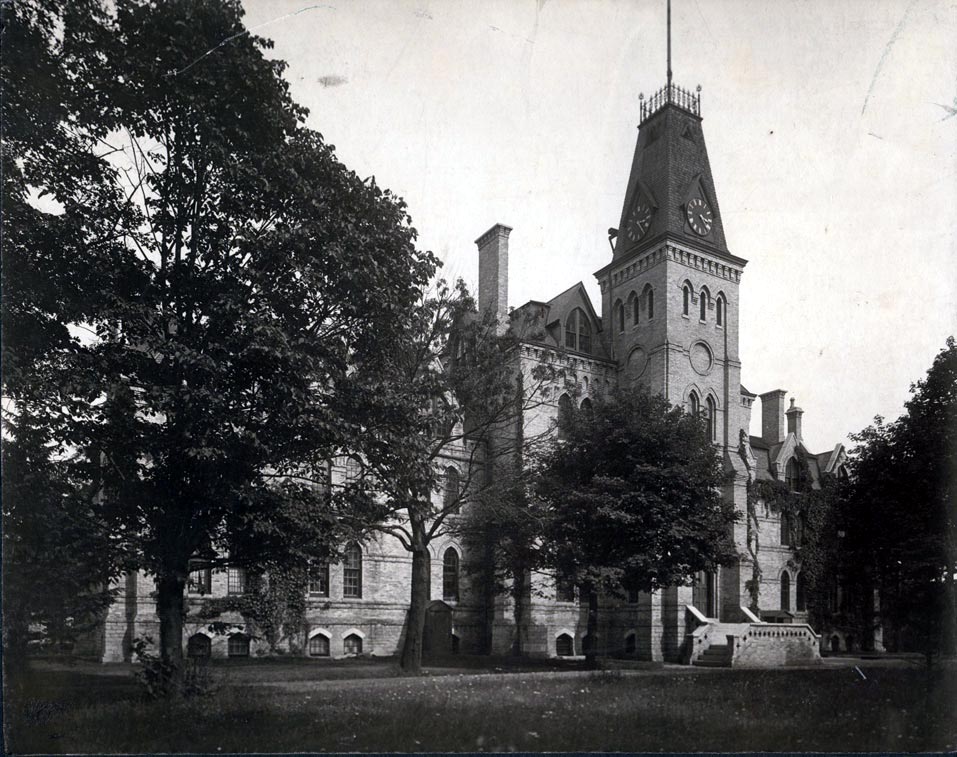
Taylor Hall
Links to DeKoven/Racine College history
Historical
Sketch of Racine College, by Homer Wheeler, 1876
|



